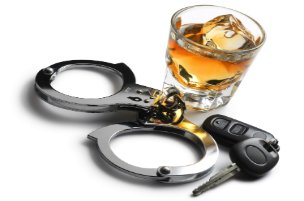State v. D.D.
Blood / Alcohol Content (BAC):
.14%
Defense:
Interfering Chemicals
Defense Attorney:
Matthew B. Nichols
Offense:
Operating Under the Influence (OUI, DUI, DWI)
Maximum Sentence:
364 days in jail (minimum 48 hours in jail, 90-day license suspension, $400 fine)
Synopsis:
Client was observed (by a Scarborough Police Officer) operating erratically and at an excessive speed on route 1. According to the arresting officer he had difficulty locating his pertinent paperwork; his eyes were bloodshot and glassy; his speech was slurred; his breath smelled of intoxicants. After exiting his vehicle Client was asked to perform a number of field sobriety tests.
They went as follows according to the arresting officer: ABC’s: Client confirmed that he completed high school but could not remember whether he graduated in 1996 or 1997; he also mistakenly said that he graduated from Scarborough High School rather than Gorham High School. On his first attempt he slurred “A-G” correctly then said “I, H, K, L, N, O … I forgot them.” On his second attempt he said “A-G” correctly, then “H, I, K, N, O, P, Q, R, T, U, X, Y, Z.” Walk and Turn (9 steps out heel to toe, nine steps back heel to toe): Client started test before told to do so; Client stepped off line and missed heel-to-toe on steps 3, 4, 6, 8 on initial nine steps; Client stepped off the line and missed heel-to-toe on steps 3, 6, 7 on second nine steps; Client used his arms for balance on both tests (contrary to instructions). One Leg Stand: (Stand with one leg raised for 30 seconds without dropping foot). Client started the test before told to do so; dropped his foot eleven times; Client miscounted (all contrary to instructions). Client had mood swings, continued to have slurred speech and used profanity in speaking with the arresting officer.
At the police station, Client submitted to an Intoxilyzer 5000 test. The result was a .14% BAC. The legal limit in Maine is a .08% BAC. Regardless of the test result a person accused of drunk driving in Maine will be convicted if the jury finds that the Client’s “mental or physical faculties were impaired to the slightest degree or to any extent by alcohol and/or drugs”. In other words, the state gets a conviction if the jury finds that the Client operated a motor vehicle while having a blood-alcohol level of .08% or more or while the Client was impaired to the slightest degree.
Following a two-day jury trial the Client was acquitted. The defense called a forensic chemist, Dr. Carolyn Howard, and used the state’s own expert chemist to create reasonable doubt regarding the reliability of Intoxilyzer results.
The attack on the Intoxilyzer results was threefold: (1) Lack of scientifically acceptable calibration checks; (2) Lack of specificity for detecting alcohol as opposed to other “interfering” substances; (3) Failure to adhere to proper protocols for test administration. So much for the .14% BAC test result. The attack against impairment was more difficult.
By conducting a thorough pre-trial administrative hearing, Attorney Nichols was able to “lock-in” the arresting officer to facts that were not included in her police report. These facts were all exculpatory. Further, thorough preparation of Client’s and Dr. Howard’s testimony revealed even more exculpatory evidence, including the presence of “interfering” substances that caused the Intoxilyzer to over-report his BAC level.
Verdict:
Not Guilty.





